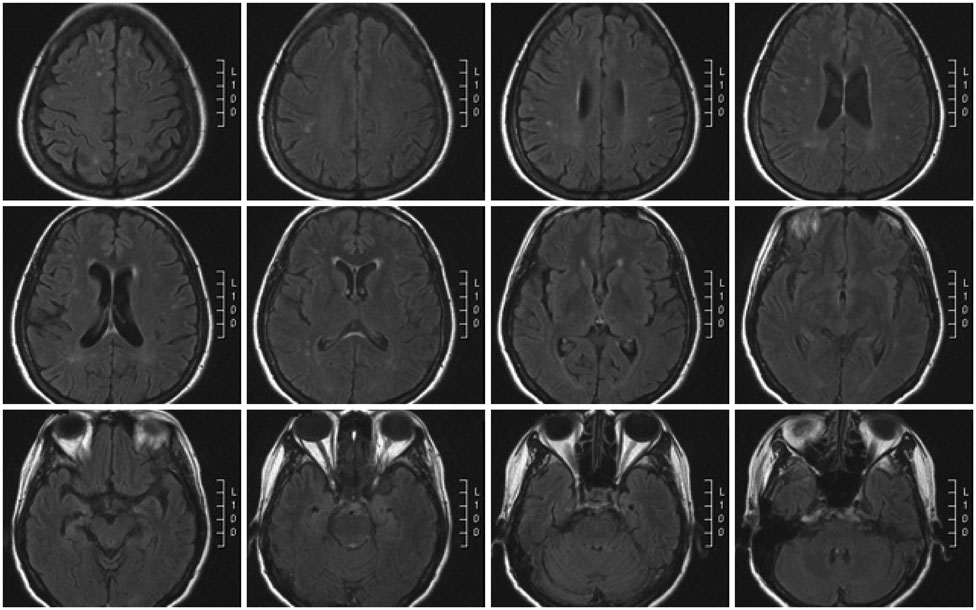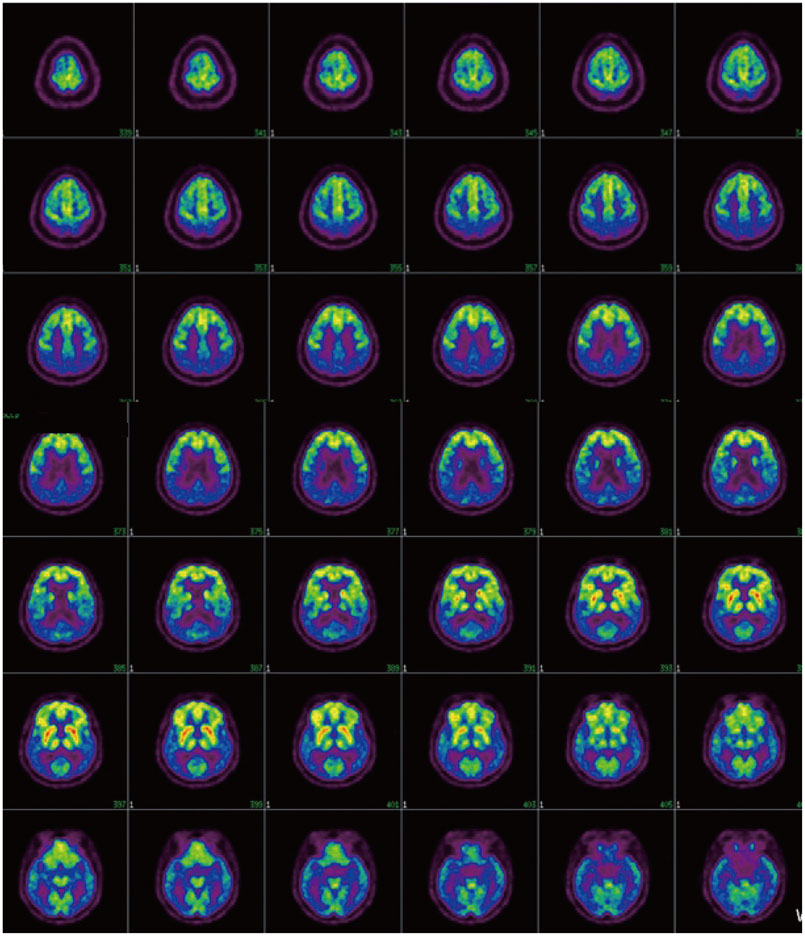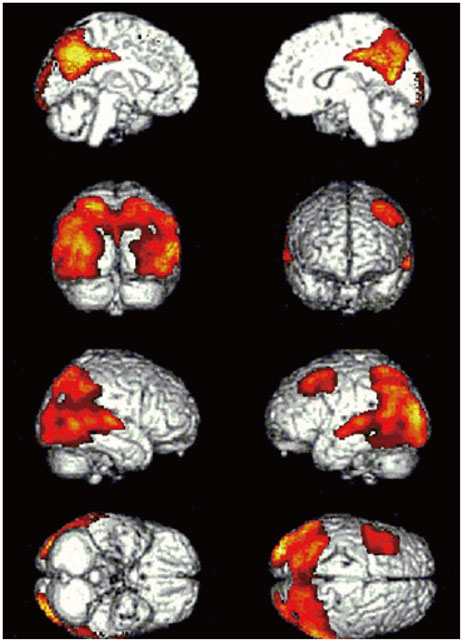Dement Neurocogn Disord.
2015 Jun;14(2):83-86. 10.12779/dnd.2015.14.2.83.
Posterior Cortical Atrophy with Acute Onset and Rapid Progressive Visual Symptoms: A Case Report
- Affiliations
-
- 1Department of Neurology, Soonchunhyang University Gumi Hospital, Gumi, Korea.
- 2Department of Neurology, VHS Medical Center, Seoul, Korea. astro76@naver.com
- KMID: 2443006
- DOI: http://doi.org/10.12779/dnd.2015.14.2.83
Abstract
- BACKGROUND
Posterior cortical atrophy (PCA) is characterized by slowly progressive early onset dementia with cortical visual dysfunction and disproportionate atrophy of the posterior cortex.
CASE REPORT
A 55-year-old right-handed woman developed visuo-spatial impairments that progressed rapidly into cortical blindness over the following 3 months. Neuro-psychological evaluation revealed Gerstmann syndrome and severe constructional impairments with all components of Balint syndrome. However, her memory, insight, and judgment were preserved. Her brain MRI was normal. However, 18F fluorodeoxyglucose positron emission tomography revealed a marked hypometabolism in the bilateral parieto-occipital region.
CONCLUSIONS
Although rapid progression of visuo-spatial dysfunction without memory impairment occurred, we considered PCA as well.
MeSH Terms
Figure
Reference
-
1. Benson DF, Davis RJ, Snyder BD. Posterior cortical atrophy. Arch Neurol. 1988; 45:789–793.2. Berthier ML, Leiguarda R, Starkstein SE, Sevlever G, Taratuto AL. Alzheimer's disease in a patient with posterior cortical atrophy. J Neurol Neurosurg Psychiatry. 1991; 54:1110–1111.3. Wakai M, Honda H, Takahashi A, Kato T, Ito K, Hamanaka T. Unusual findings on PET study of a patient with posterior cortical atrophy. Acta Neurol Scand. 1994; 89:458–461.4. Levine DN, Lee JM, Fisher CM. The visual variant of Alzheimer's disease: a clinicopathologic case study. Neurology. 1993; 43:305–313.5. Rogelet P, Delafosse A, Destee A. Posterior cortical atrophy: unusual feature of Alzheimer's disease. Neurocase. 1996; 2:495–501.
Article6. Pantela J, Bleserb RD, Schwarzb M, Weillera C. Rapid progressive form of posterior cerebral dysfunction with apperceptive agnosia in a 34-year-old man-another case of heidenhain's syndrome? Neurocase. 1995; 319–329.
Article7. Victoroff J, Ross GW, Benson DF, Verity MA, Vinters HV. Posterior cortical atrophy. Neuropathologic correlations. Arch Neurol. 1994; 51:269–274.
Article8. Kennedy AM. Functional neuroimaging in dementia. In : Growdon JH, Rossor MN, editors. The dementias. Boston: Butterworth-Heinemann;1998. p. 219–255.
Article9. Albin RL, Minoshima S, D'Amato CJ, Frey KA, Kuhl DA, Sima AA. Fluoro-deoxyglucose positron emission tomography in diffuse Lewy body disease. Neurology. 1996; 47:462–466.
Article10. Grünwald F, Pohl C, Bender H, Hartmann A, Menzel C, Ruhlmann J, et al. 18F-fluorodeoxyglucose-PET and 99mTc-bicisate-SPECT in Creutzfeldt-Jakob disease. Ann Nucl Med. 1996; 10:131–134.
Article11. Kropp S, Schulz-Schaeffer WJ, Finkenstaedt M, Riedemann C, Windl O, Steinhoff BJ, et al. The Heidenhain variant of Creutzfeldt-Jakob disease. Arch Neurol. 1999; 56:55–61.12. Snowden JS, Neary D, Mann DMA. Frontotemporal Lobar Degeneration: Frontotemporal Dementia, Progressive Aphasia, Semantic Dementia. New York: Churchill Livingstone;1996.




